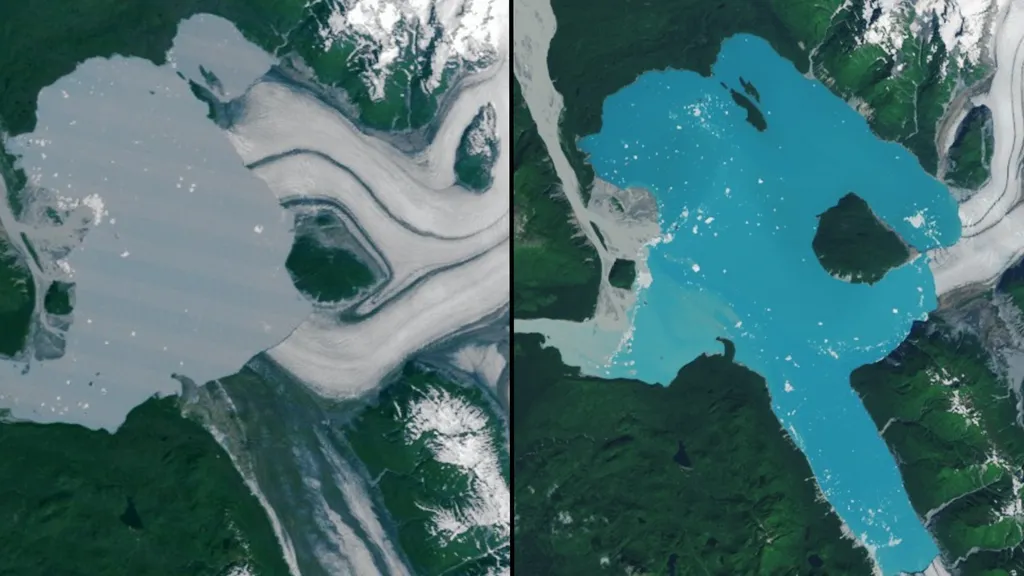In the vast, icy expanse of southeastern Alaska, a significant transformation is underway. The Alsek Glacier, once a towering mass of ice that extended three miles beyond Prow Knob, has retreated to such an extent that it has left the small rocky mound as a freestanding island. This dramatic change, captured in recent satellite imagery from NASA, underscores the rapid pace of glacial retreat in the region.
The Alsek Glacier’s retreat has led to the formation of Alsek Lake, which has nearly doubled in size over the past four decades. The lake, fed by meltwater from surrounding glaciers, now entirely surrounds the 2-square-mile Prow Knob. This transformation is not an isolated incident but part of a broader trend affecting Alaska’s glaciers. The state is home to 19,000 glaciers, covering an area nearly the size of West Virginia. However, as temperatures rise, these glaciers are rapidly retreating, shedding more than 66 billion tons of ice each year.
The implications of this glacial retreat are far-reaching, particularly for the agriculture sector and investors. The retreat of glaciers can lead to changes in water availability, which is crucial for agriculture. Glaciers act as natural reservoirs, storing water in the form of ice and snow and releasing it gradually during the warmer months. As glaciers retreat, this natural water storage system is disrupted, potentially leading to water shortages during the growing season.
Moreover, the retreat of glaciers can also lead to changes in river flows and sediment loads, which can affect soil fertility and agricultural productivity. The meltwater from glaciers often carries nutrients that enrich the soil, but as glaciers retreat, the supply of these nutrients can be reduced, impacting crop yields.
For investors, the retreat of glaciers presents both risks and opportunities. On the one hand, the retreat of glaciers can lead to increased uncertainty and risk for agricultural investments, particularly in regions that rely heavily on glacial meltwater for irrigation. On the other hand, the retreat of glaciers can also open up new opportunities for investment in water management and irrigation technologies, as well as in research and development aimed at adapting agriculture to a changing climate.
In conclusion, the retreat of the Alsek Glacier and the formation of Alsek Lake are stark reminders of the rapid pace of climate change in Alaska. The implications of this transformation for the agriculture sector and investors are significant and far-reaching, highlighting the need for proactive adaptation and investment in sustainable water management practices.

